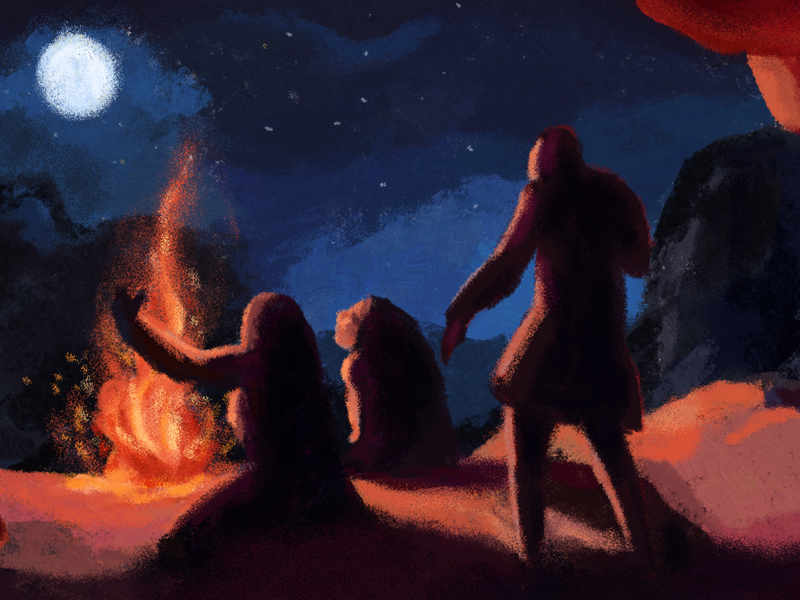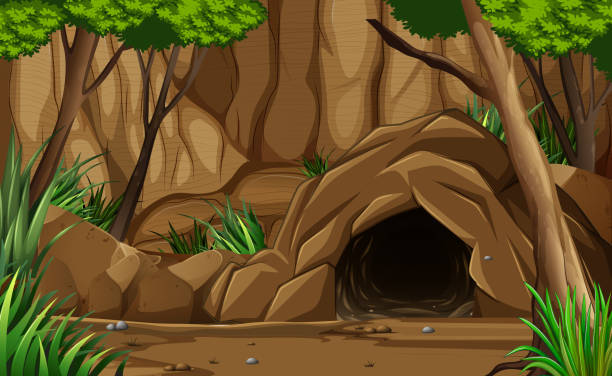
The evolution of mankind has been a vast process, but a significant one. This includes the establishment of the state. Primarily, groups of people came together, and what we call a ‘society’ came into existence. And then this society transformed into a formal institution, with definite borders – The State. To maintain the peace and well-being of its people and ensure justice, certain rules were made by the State (and by extension, the people themselves) which together can be called ‘Law’. Since then, the sphere of law, and the extent of its applicability has been challenged on various occasions, by various professionals. One such instance is the Speluncean Explorers’ case.
Written by legal philosopher Lon L Fuller, ‘The Case of Speluncean Explorers’ is an article which includes a hypothetical case, taking the form of a fictional judgment. Years after its publication, it remains a debatable topic in the field of jurisprudence. In this article, I will examine in detail, the facts of the case, the judgments, and the place that it holds in the field of jurisprudence.
Understanding The Situation
A group of five Speluncean explorers set out to explore a cave, and are trapped inside the said cave when its entrance collapses due to a landslide.
After establishing contact with the rescue team via radio on the 20th day of their cave-in, they learn that it will be at least 10 days until they are rescued.

One of them, who goes by the name Roger Whetmore, asks the medical expert whether they would survive 10 days without any supply of food or water. To which, the expert replies that the chances are unlikely. Roger then asks whether they could survive if they were to engage in cannibalism and eat one of their members. The expert replies by saying yes, but before further communication can happen, the signal gets cut off. Roger then offers a pair of dice, to decide whom to kill and eat. But just before throwing the dice, Roger withdraws from it and insists on waiting one more week. The other four explorers disagree, and hence the dice are thrown. Unfortunately for Roger, he gets chosen, so the other explorers kill and eat him.
The survivors are then rescued on the 32nd day, and upon their arrival in the city, they are charged guilty of murder. But they might have a chance at clemency (mercy), as a five-judge bench is set up by the Supreme Court of Newgarth, (imaginary city by Fuller) to decide the fate of the four survivors.
A Close Look At The Judgments
Fuller presents five judicial opinions, each different from the other, in his article. In the city of Newgarth, the mandatory sentence for murder is death by hanging. The judgments of these 5 judges will decide what would happen. Now, let’s look a bit into detail, what these judges had to say –
- Chief Justice Truepenny
CJ Truepenny considers the original decision to be fair. According to him, there is no statutory provision for this, even if the case seems sympathetic. However, he prefers to rely on the executive for granting clemency and appeals to the court to join the petition for clemency, as it’s not directly under the control of the judiciary. Hence, to summarize, CJ Truepenny upholds the conviction but recommends clemency.
- Justice Foster
J Foster says that with this case, the very law of entire Newgarth is at stake. He argues that the defendants were in a ‘state of nature’, isolated from the society, and thus, the normal laws of Newgarth do not apply to them. According to him, the laws of nature would allow them to agree to sacrifice one’s life to save the other four. Thus, he sets aside the convictions.
- Justice Tatting
J Tatting recuses himself from giving a judgment, on the grounds that he cannot come to a decision due to competing legal rationales and emotions
- Justice Keen
J Keen affirms the conviction based on two factors. He criticizes CJ Truepenny, on the grounds that as judges, they should respect the ‘separation of powers’ and thus, the plea regarding clemency should be only a remark made as a private citizen and not as a judge. Secondly, he does not concern himself with ‘right’ or ‘wrong’ and he thinks that judges are not to apply their conceptions of morality, but to apply the ‘law of the land.’ He thus dismisses J Foster’s judgment. Thus, he upholds the original decision.
- Justice Handy
J Handy suggests that the court should take into consideration public opinion. He further states that since 90% of the population thinks that the explorers should be pardoned, the decision is easy. This way, J Handy sets aside the convictions.
Tatting J is asked by the Chief Justice whether he wants to re-examine his position, but he declines and affirms he would not participate in the case. The Supreme Court, divided evenly, affirms the conviction. Fuller provides no further details as to the outcome.
Now, taking an overall look into these judgments, the case mainly presents two theories of jurisprudence – ‘Natural law’ and ‘Legal positivism.’
Natural Law vs. Positive Law
First, it is important to understand the difference between Natural Law and Positive Law. All the laws, that are written, and are made by a particular government for the people, come under positive laws. Whereas, the laws that are universally applicable, and are unwritten, are natural laws.
Natural law says that human beings possess intrinsic values that govern our reasoning and behavior. Natural law maintains that these rules of right and wrong are inherent in people and are not created by society or court judges. This is in contrast to the man-made laws, which formally decide what is right and wrong. Lon Fuller has strongly emphasized these two aspects, through the five judgments that he provides. Amongst which, J Foster strongly supports the natural law. According to him, since the explorers were in a state of nature, and not in a state of civil society, positive law no longer applies to them, and hence they should not be punished.
He also provides us with an example, where he deals with the fact that 10 people from the rescue team died while saving them, and if sacrificing the lives of 10 people to save 4 is acceptable, then why not one. He further states that if this happened outside the territory of Newgarth, they would not even be addressing the issue. So, he insists that since they were in a state of nature, the fact that they chose to eat one of them for the survival of the other four, is acceptable in the eyes of Natural Law.
Whereas, considering the sphere of positive law, the action counts as murder, as it is the action of wilfully taking the life of someone. Given the fact that the rescue team arrived on the 32nd day, and that Roger was killed on the 23rd day, it is possible that they might have survived, even if they had not killed him.
In the case, if one of them had naturally died of starvation earlier than the others, performing the act of eating him would have been reasonable. So, according to the Positive Law, even if natural circumstances were such, the said act is that of murder and cannibalism, and therefore, is fully punishable.
Conclusion
A lot of debate has taken place in this case, and various people have put forward their opinions. The question of morality is a difficult one and mixing it with the law is an even dangerous operation. The two ideas presented- Natural Law vs. Positive Law, are contradictory, and if one were to be chosen regarding this case, we would need some really strong arguments. And even with those, the jurisprudential essence of this case lies so deep, that with every layer that unfolds, we are presented with a new and different perspective. No doubt, why this case has put a lot of professionals into a dilemma and is considered as a significant one when talking about legal philosophy.
Editor’s Note
One of the important elements in the evolution of mankind has been the formation of the State; and consequently the development of law. This article highlights one of the most debatable articles in legal jurisprudence, authored by Lon L Fuller, about the case of Speluncean explorers. This article explains the facts of the case and analyzes the judgments passed by the five-judge bench. It also throws some light upon the debate between natural law and positive law that surrounds the case. The author further highlights the importance of this hypothetical case in legal philosophy and concludes by saying that mixing the question of morality with the question of law could be a dangerous operation, and a lot of professionals are put in a dilemma because of the same.